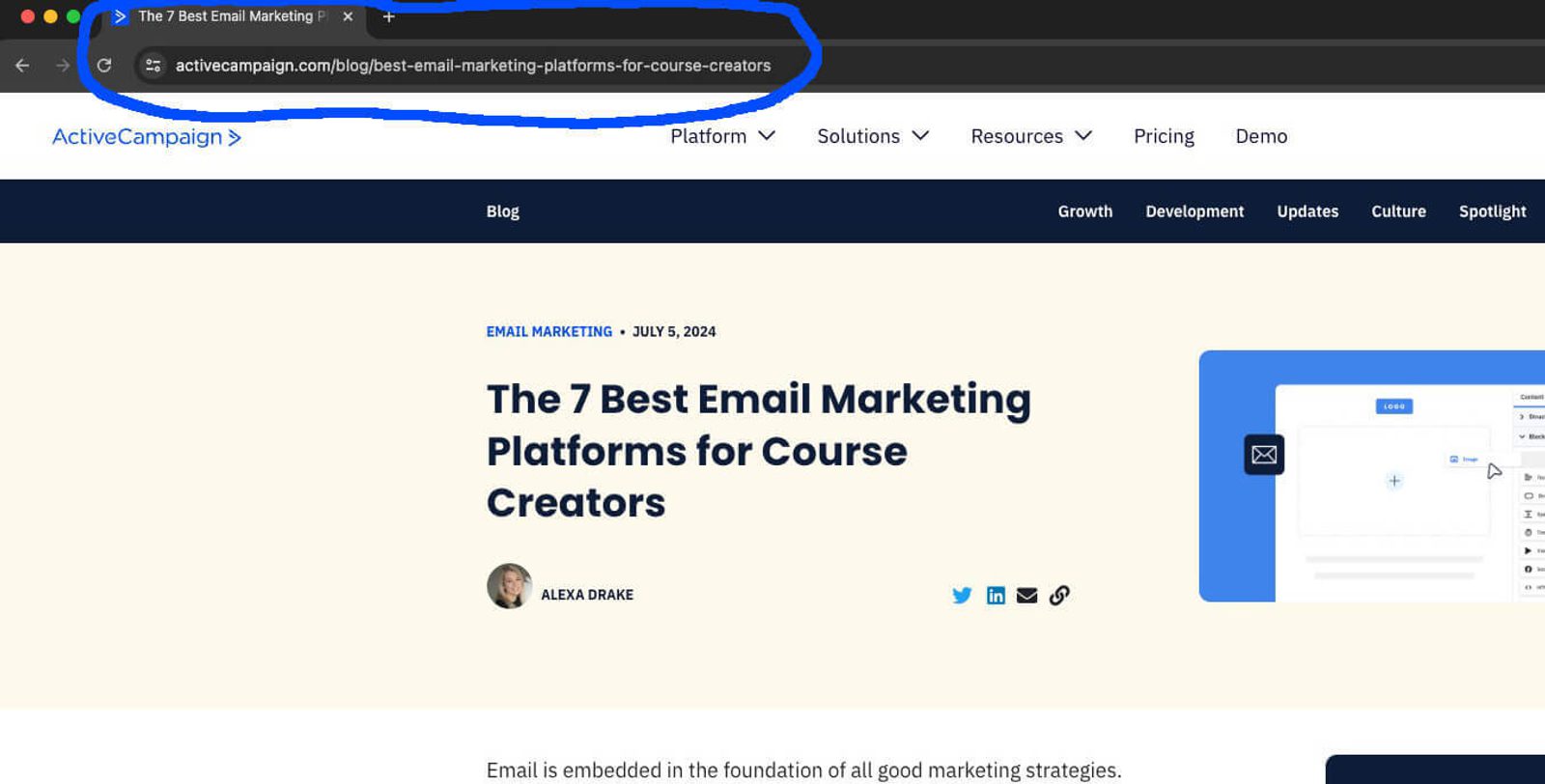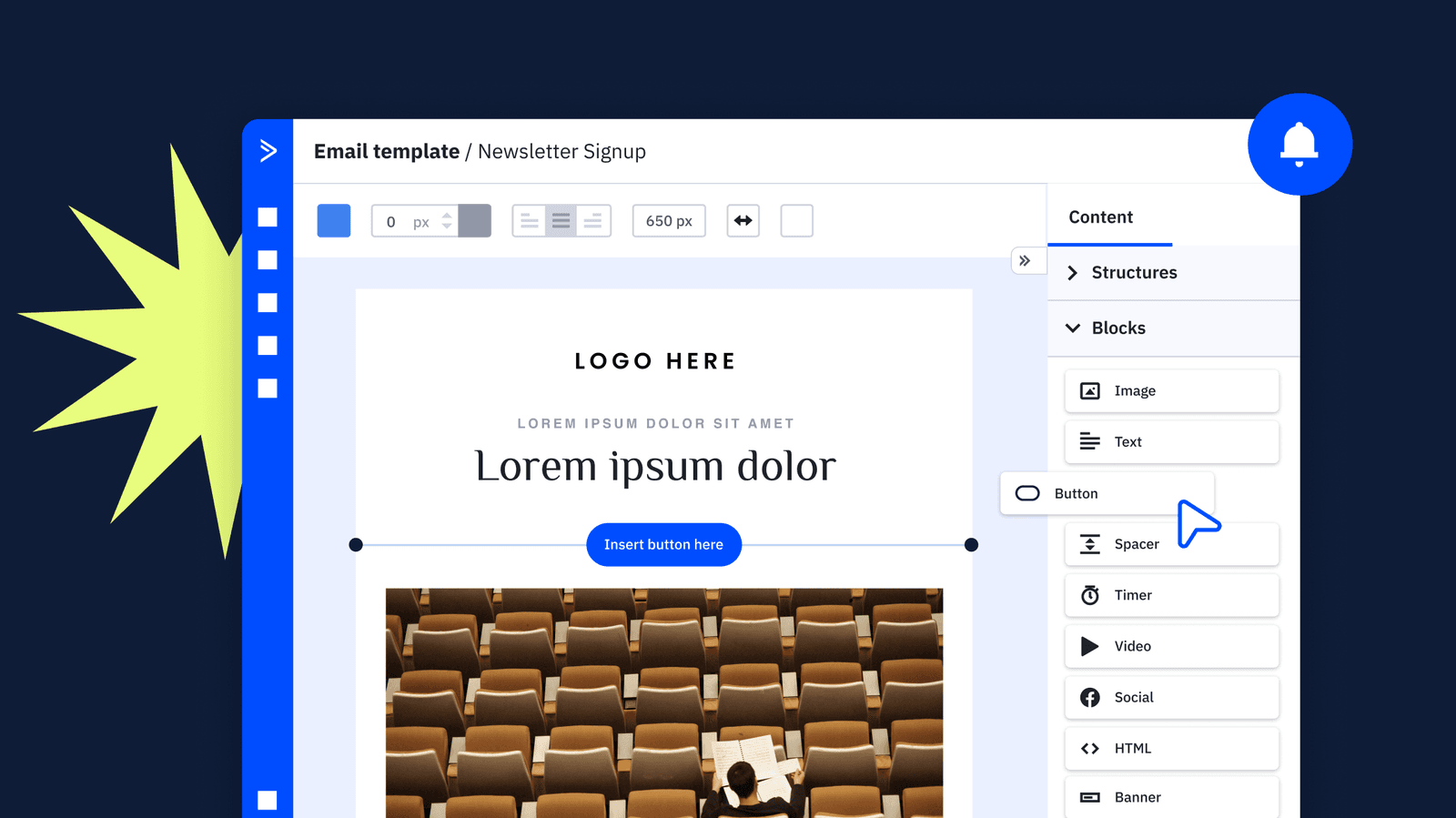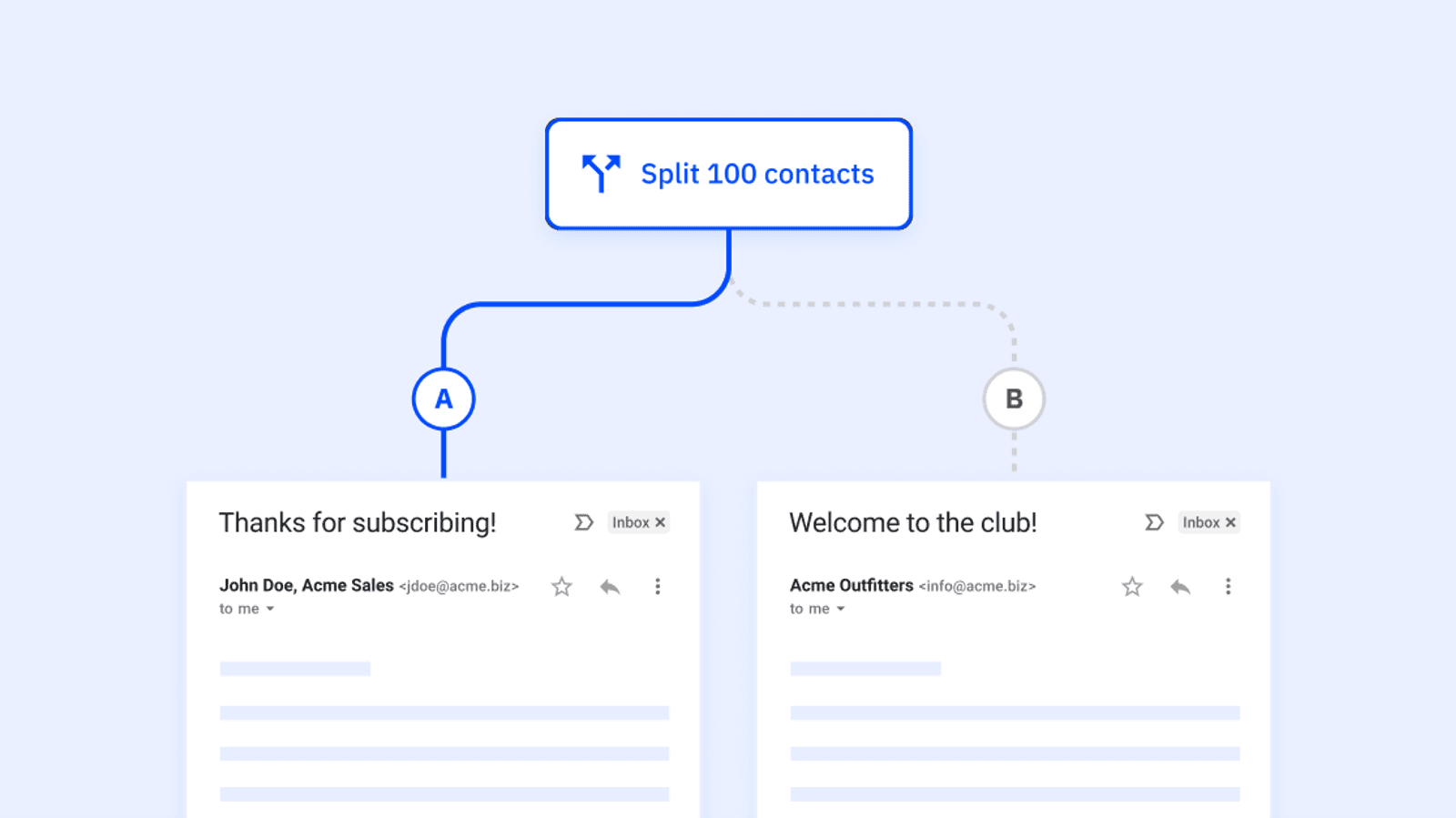Did you know the global online learning market is projected to reach $375 billion by 2026? With more people turning to the internet to enhance their skills and knowledge, the competition among online courses is fiercer than ever. This makes effective marketing not just an option but a necessity to ensure your course stands out.
Our last post covered the foundational steps to creating an online course, including understanding your target audience and building a strong online presence. Now that your course is ready to go, it’s time to dive into the world of online course marketing. Successfully marketing your course is crucial for attracting students, building your brand, and ultimately driving revenue.
This post will walk you through various advanced marketing strategies, with a particular emphasis on email marketing—a powerful tool for engaging with your audience and nurturing leads. We’ll build on the basics and explore new tactics to help you reach a wider audience and make a lasting impact.
What is online course marketing?
Online course marketing involves the strategies and techniques used to promote and sell online courses. This encompasses a range of activities, from attracting potential students to your course and converting them into paying customers to engaging with them throughout their learning journey to encourage course completion and continued engagement with your content.
Marketing your online course effectively means wearing a few different hats. First, you need to know who your students are. By understanding their demographics, interests, and online habits, you can tailor your marketing to really speak to them.
Once you’ve got your audience figured out, the next step is to create engaging marketing materials. Think persuasive landing pages, email campaigns, social media posts, and useful content like blog posts, videos, and webinars. Each of these tools helps attract and convert potential students.
Leveraging email marketing
Email marketing is an incredibly powerful tool for promoting your online courses. A well thought out email campaign can build direct relationships with your audience and keep them engaged over time. This continuous engagement helps guide your students through their learning journey, ensuring they remain connected and committed to your courses.
Let's explore how you can effectively leverage email marketing to boost your course enrollments and build a loyal student base.
Growing your subscriber base with an email list
The first step in leveraging email marketing is building a robust email list. This involves attracting subscribers and ensuring that the signup process is seamless. But how can you go about doing this?
Offer lead magnets
To attract subscribers, offer valuable lead magnets that provide real value to your potential students.
Lead magnets can come in various forms:
- Free ebooks: Create a comprehensive guide or ebook that addresses a common problem or provides valuable insights related to your course topic.
- Webinars: Host a free webinar that offers a sneak peek into your course content or covers a specific aspect of your topic in detail.
- Infographics, cheat sheets, and checklists: Develop practical resources that students can use as quick references or step-by-step guides.
To attract the right audience, make sure your lead magnets are high quality and directly relevant to your course content.
Want to learn more? Check out our extensive guide on lead magnets.
Use signup forms and landing pages effectively
You need well-designed signup forms and landing pages to convert visitors into subscribers.
Here are some tips to optimize them:
- Visibility: Ensure your signup forms are prominently displayed on your website, blog, and social media profiles. Consider using pop-ups or slide-ins to catch the visitor's attention.
- Simplicity: Keep your forms simple and easy to fill out. Ask for minimal information—usually just a name and email address—to reduce friction and increase conversions.
- Clear benefits: Your landing pages should clearly communicate the benefits of subscribing. Highlight your lead magnets and use compelling calls to action to persuade visitors to sign up.
Additionally, A/B test different form designs, headlines, and call-to-action buttons to see what resonates best with your audience. This will help you improve your signup process and grow your email list more effectively.
Engaging your audience with email campaigns
With a solid email list in place, the next step is to engage your audience through targeted email campaigns. These campaigns help maintain interest in your courses and encourage subscribers to take action.
Welcome series
First impressions are important, and a welcome series is a great way to introduce yourself and your courses to new subscribers. This sequence of emails allows you to share your story, letting your subscribers know who you are and what drives your passion for teaching. Adding a personal touch helps build a connection with your audience.
In your welcome series, highlight the unique aspects of your courses. Showcase what makes them special, whether it's your teaching style, exclusive content, or success stories. Emphasizing these points can make your offerings stand out.
Finally, use the welcome series to set the tone for your future communications. Establish a consistent voice and style to build a recognizable brand, making your emails feel familiar and trustworthy to your subscribers.
Regular newsletters
A welcome series isn’t enough. Keeping your audience engaged is crucial for maintaining interest in your courses. Send regular newsletters to share updates, tips, and valuable content related to your course topics.
In your newsletters, it's important to include course updates. Inform your subscribers about new courses, updates to existing ones, and any upcoming events. Keeping them in the loop about what’s new and exciting can spark renewed interest and encourage them to explore more of your offerings.
Additionally, provide tips and insights in your newsletters. Offering valuable tips, industry insights, and useful information helps your subscribers learn and grow. This added value can enhance their learning experience and keep them looking forward to your emails.
Lastly, highlight your community by sharing success stories, testimonials, and user-generated content. Showcasing the achievements and experiences of others can build a sense of community and encourage engagement. It demonstrates the impact of your courses and fosters a supportive learning environment.
Promotional emails
Promotional emails are key to driving course enrollments. Use these emails to announce new courses, offer discounts, and highlight special offers.
To make your promotional emails effective:
- Create urgency: Use time-limited offers and discounts to encourage immediate action.
- Highlight benefits: Clearly communicate the benefits of enrolling in your courses, such as skill development, career advancement, or personal growth.
- Include clear calls to action: Make it easy for subscribers to take the next step with prominent and compelling calls to action.
Implementing these email campaigns will help you engage your audience, maintain their interest, and convert them into loyal students.
Automating your email marketing
Leveraging automation tools to maximize the efficiency of your email marketing efforts can save you time and ensure your messages are timely, relevant, and personalized.
Automation is a game-changer in email marketing. Tools like ActiveCampaign allow you to set up automated email sequences that send the right message at the right time.
A crucial aspect of email automation is the welcome series. Automating this series is essential. You can automatically send a series of welcome emails to new subscribers, introducing them to your courses and setting the tone for future communications. This initial interaction helps create a positive first impression and builds a foundation for ongoing engagement.
Another important strategy is creating follow-up sequences for individuals who have shown interest in your courses but haven't enrolled yet. These follow-up emails can include reminders, additional information, and incentives to encourage enrollment. By keeping your courses top of mind, you increase the chances of converting these interested individuals into students.
Additionally, setting up engagement triggers based on subscriber actions can significantly enhance your email marketing efforts. For instance, you can create triggers for actions like clicking a link or downloading a lead magnet. These triggers can then initiate targeted emails designed to move subscribers further down the funnel, increasing their engagement and likelihood of enrolling in your courses.
Segment your audience for personalized emails
Segmentation is another powerful feature of email marketing automation. You can send highly personalized emails that resonate with each group by segmenting your audience based on their interests, behavior, and demographics.
Here’s how to effectively segment your audience:
- Interest-based segments: Group subscribers based on the topics or courses they are interested in. This allows you to send them content and offers to match their interests.
- Behavioral segments: Segment your audience based on their interactions with your courses, emails, and website. For example, create segments for active subscribers who regularly open your emails and another for those who haven’t engaged recently.
- Demographic segments: Use demographic information such as age, location, and occupation to tailor your messages to different segments of your audience.

A solid email automation and segmentation strategy can keep your audience engaged, drive more enrollments, and build a loyal community of learners. Tools like ActiveCampaign make it easy to implement these strategies, ensuring that your email marketing is both efficient and impactful.
Amplifying your reach with social media marketing
Social media is a powerful tool for marketing your online courses. If you have a strong social media strategy, you’ll reach and engage with a larger audience while building a community around your content. Let’s explore how you can effectively use social media to promote your courses.
Choosing the best platforms for your audience
Selecting the right social media platforms is crucial for connecting with your target audience. Different platforms cater to different demographics and content types, so choosing those that align with your course offerings is important.
For professional courses, LinkedIn is an excellent choice. It’s a platform where professionals seek educational opportunities and share industry insights. By creating engaging posts, sharing valuable content, and participating in relevant groups, you can attract professionals looking to advance their skills.
For creative courses, platforms like Instagram and Pinterest might be more suitable. These visually-driven platforms are perfect for showcasing your creative work and connecting with a community interested in your niche. Use high-quality images, behind-the-scenes content, and creative captions to capture the attention of potential students.
Crafting an engaging content strategy
Once you have your network picked out, a solid content strategy is essential for maintaining a consistent and engaging presence on social media. Start by developing a posting schedule that ensures regular updates without overwhelming your audience. Consistency helps build trust and keeps your audience engaged.
Visual content is particularly effective on social media. Images, infographics, and videos help make your posts more engaging, while stories and live sessions are great tools for connecting with your audience in real-time.
Here are some tips for a strong content strategy:
- Plan ahead: Use a content calendar to plan your posts in advance.
- Mix content types: To keep your feed interesting, combine different types of content, such as images, videos, and text posts.
- Engage with your audience: Respond to comments, messages, and mentions to foster a sense of community.
Boosting visibility with targeted ads

In addition to organic content, paid advertising on social media can significantly boost your course enrollments. Paid ads help you target specific demographics, ensuring your content reaches the right audience.
Platforms like Facebook and Instagram offer advanced targeting options, including age, location, interests, and behavior. This allows you to create highly targeted campaigns that speak directly to your ideal students. Plus, using compelling visuals and clear CTAs in your ads will encourage clicks and conversions, a win-win
Retargeting is another powerful strategy. They help you reach users who have previously visited your website or engaged with your content but haven't enrolled. These ads serve as a reminder and can help drive conversions as well
Here are some tips for effective social media advertising:
- Set clear goals: Define what you want to achieve with your ads, whether it's more enrollments, website visits, or brand awareness.
- Monitor performance: Review your ad performance regularly and adjust as needed to optimize results. If the ad platform supports A/B testing, use it.
- Budget wisely: Allocate your budget based on the platforms and ad types that perform best for your goals.
Combining organic content with paid advertising can maximize your reach and impact on social media, driving more enrollments for your online courses.
Inbound marketing beyond blogging
Blogging is a fantastic way to share valuable content, attract organic traffic, and establish authority in your niche. However, content marketing doesn’t stop at blogging. There are several other powerful formats you can use to engage your audience and promote your courses.
Creating engaging video content
Video content is a dynamic way to capture your audience’s attention and provide value. Platforms like YouTube, Instagram, and Facebook are perfect for sharing tutorials, webinars, and course previews.
Leverage YouTube and social media
YouTube is the second-largest search engine after Google, making it ideal for reaching a wide audience. You can create tutorials that showcase your expertise or provide valuable insights into your course topics on YouTube for free, leading them to your course landing page.
Webinars can also be a great way to engage live with your audience, answer questions in real-time, and give a taste of what your courses offer.
You can also repurpose your video content across multiple platforms like Instagram, Facebook, and LinkedIn. For example, you can cut an hour-long webinar into a 30-minute long-form video for YouTube and pull out a few shorter video snippets for YouTube Shorts. This can drive traffic to your main course page and build excitement around your offerings.
Tips for effective video content:
- Quality production: Invest in good lighting, sound, and video editing to create professional-looking content. A good camera is also important if you plan to be part of the video, but most smartphones will work.
- Consistency: Post videos regularly to keep your audience engaged.
- Engagement: Encourage viewers to like, comment, and share your videos to increase their reach.
Expanding reach with guest posting
Guest posting on relevant blogs is an excellent strategy for reaching a wider audience. By writing for established blogs in your niche, you can tap into their readership and attract new students to your courses. Start by identifying popular blogs and websites that cater to your target audience and then reach out to them with well-crafted pitches, offering to write valuable content that aligns with their themes and interests.
There are many benefits in guest posting, including increasing your visibility, allowing you to access a broader audience that may not yet be aware of your courses. Additionally, being featured on reputable blogs enhances your credibility and trustworthiness, positioning you as an authority in your field. It also has significant SEO benefits, generating high-quality backlinks from reputable sites that can boost your search engine rankings and improve your online presence to drive more organic traffic to your website.
Engaging a new audience through podcasting
Podcasting is a growing medium that offers a unique way to engage with your audience. It allows you to share your expertise, interview industry experts, and discuss topics related to your courses in an accessible audio format.
Start a podcast related to your course topics
Launching a podcast can help you reach a different segment of your audience—those who prefer listening over reading or watching videos. Discuss relevant topics, share insights from your courses, and invite guest speakers to add variety and depth to your content.
To build a loyal following for your podcast, consistency is key. Releasing episodes regularly helps maintain audience interest and keeps listeners coming back for more. Engagement is another crucial aspect. Encourage your listeners to subscribe to your podcast, leave reviews, and share episodes with their networks to foster a sense of community and increase your reach.
Effective promotion is also essential for growing your audience. Use your email list and social media platforms to promote your podcast and consider collaborating with other podcasters to expand your listener base and enhance your visibility.
Pro Tip: Many podcasters record their podcast as a video, upload it to YouTube, and send the audio to podcast hubs like iTunes. Doing this will maximize your reach and make the most out of a single piece of content.
While blogging is one of the most well-known forms of content marketing, exploring other strategies will help you reach a wider audience, engage potential students in diverse ways, and ultimately drive more enrollments for your online courses. And ultimately, that’s the end game.
Collaborations and partnerships
Collaborations and partnerships can significantly amplify your reach and credibility. By working with influencers, affiliates, and other experts, you can tap into new audiences and enhance the value of your courses.
Let's explore how these partnerships can boost your online course marketing efforts.
Leveraging influencer marketing
Partnering with influencers in your niche is a powerful way to promote your courses. Influencers have established trust with their followers, and their endorsement can lend credibility to your offerings.
Identify influencers who align with your course topics and values. Reach out to them with a proposal to collaborate, offering them free access to your course in exchange for an honest review or promotion. You can also work together on creating content, such as webinars, Instagram takeovers, or joint social media posts, to further engage their audience.
Benefits of influencer marketing:
- Credibility: Influencers' endorsements can build trust and credibility for your courses.
- Reach: Access the influencer's established audience, which can lead to higher enrollments.
- Engagement: Collaborative content can generate more engagement and interest in your courses.
The best influencer for your course might not necessarily be the one with the largest following. A common and effective strategy is collaborating with multiple micro-influencers, who can help diversify and broaden your reach. Focus on influencers with high engagement rates rather than just large numbers of followers, as their audience is often more active and responsive.
Creating an affiliate marketing program
Affiliate marketing is an effective strategy to incentivize others to promote your courses. Offer a commission for each sale generated through affiliates to create a motivated team of marketers who help spread the word about your courses.
Set up an affiliate program with clear guidelines, commission rates, and marketing materials. Choose affiliates who have an audience that matches your target market. Provide them with everything they need to promote your courses effectively, including banners, links, and exclusive discounts for their followers.
Advantages of affiliate marketing:
- Cost-effective: You only pay for actual sales, making it a cost-effective digital marketing strategy.
- Expanded reach: Affiliates can introduce your courses to new audiences you might not have reached otherwise.
- Increased sales: Motivated affiliates can drive more enrollments and boost your revenue.
By creating an affiliate program, you can leverage the marketing efforts of others to increase your course visibility and sales.
Pro tip: Many online course platforms, like Udemy, offer built-in affiliate programs. However, if your chosen platform doesn’t include this feature, consider providing other incentives for your affiliates. This could include offering free content outside the platform through email or YouTube, which can help motivate affiliates to promote your courses more effectively.
Collaborating with guest instructors
Bringing in guest instructors is a fantastic way to add value to your courses and attract a broader audience. Collaborating with other experts can enhance your course content and provide additional perspectives.
Invite guest instructors who are experts in complementary fields to co-create courses or offer guest lectures. This can enrich your course content and make it more appealing to students. Promote these collaborations through your marketing channels to generate interest and excitement.
Benefits of guest instructors:
- Enhanced content: Guest instructors can provide unique insights and expertise, adding depth to your courses.
- Broader appeal: Their presence can attract students interested in learning from multiple experts.
- Cross-promotion: Collaborating with guest instructors can lead to cross-promotion and extend your reach to their audience.
Collaborating with thought leaders in your niche—or even from complementary fields—can significantly boost your course's credibility, expand your audience, enrich your content, and ultimately drive more enrollments.
Using online communities and hosting Q&As
Engaging with online communities and forums is a highly effective way to promote your courses and connect with potential students. As a thought leader, you can offer your experience and expertise in these spaces, providing valuable insights and fostering meaningful discussions. Online communities offer a space for interaction, allowing you to build relationships and establish credibility within your niche.
Let’s explore how you can leverage forums and live interactions to enhance your course marketing efforts.
Engage your audience in forums and groups
Participating in online forums and social media groups related to your course topics can help you build a presence and establish yourself as an authority in your field.
Start by identifying popular forums and groups where your target audience is active. Platforms like Reddit, Facebook Groups, Discord, and specialized industry forums are excellent places to begin. Join these communities and contribute meaningfully by answering questions, sharing insights, and offering helpful resources.
Tips for effective engagement:
- Be genuine: Authenticity is key. Engage in conversations naturally without overly promoting your course.
- Provide value: Share valuable content and insights that genuinely help the community members.
- Build relationships: Consistently participate to build trust and rapport within the community.
Little blurb about joining these communities and not being overly promotional and how that can actually hurt your chances of anyone signing up for your course
Hosting live Q&A or AMA sessions
Hosting live Q&A or Ask Me Anything (AMA) sessions is another powerful way to engage with your audience. These interactive formats allow you to showcase your expertise, provide immediate value, and build a deeper connection with potential students.
Live Q&A or AMA sessions offer a casual and interactive setting. They allow you to answer questions in real time, address concerns, and provide immediate feedback. Use platforms like Facebook Live, Instagram Live, or YouTube Live to host these sessions and encourage participation.
Benefits of live Q&A or AMA sessions:
- Showcase expertise: Demonstrate your knowledge and skills, building credibility and trust.
- Interactive engagement: Foster a two-way interaction, making your audience feel heard and valued.
- Promote your courses: Subtly promote your courses by highlighting their relevance to the topics discussed.
Engaging with online communities and hosting interactive sessions are effective strategies for building a loyal following and promoting your online courses. These approaches help you reach potential students and foster a sense of community and trust around your brand.
Elevate your visibility with SEO for course marketing
Search Engine Optimization (SEO) is essential for marketing your online courses. Through effective SEO practices, you can enhance your visibility on search engines and attract a higher volume of organic traffic. This increased exposure not only brings more potential students to your site but also plays a crucial role in driving up course enrollments.
Let’s explore the key strategies for on-page SEO, off-page SEO, and content optimization.
On-page SEO: Crafting optimized course pages
Optimizing your course landing pages is essential for improving your search engine rankings and attracting potential students. While many online course platforms offer limited SEO capabilities, you can still optimize pages on your own website to grow your courses.
Start by researching keywords your target audience uses to search for courses like yours. Incorporate these keywords naturally into your course titles, descriptions, headings, and content.
Pro tip: Maximize your visibility by integrating SEO on your course platform with a robust blogging strategy. This combination will attract potential students from multiple channels, ensuring you reach them wherever they are in their online journey.
Enhance meta descriptions, title tags, and URLs
Although you might not have control over metadata on every platform, many allow you to customize them. Meta descriptions and title tags play a crucial role in on-page SEO. They should be compelling and include your primary keywords. A well-crafted meta description can improve click-through rates, while an optimized title tag helps search engines understand the content of your page.
If you have control over the URLs, ensure they are clean and include relevant keywords. Additionally, use internal linking to connect your course pages with other related content on your site, helping users and search engines navigate your website more effectively.

By taking these steps, you can enhance the SEO of your course pages, even if the platform’s SEO capabilities are limited, and drive more traffic to your courses.
Off-page SEO: Building authority through backlinks
Off-page SEO involves strategies to increase your website’s authority and relevance through external sources.
Build backlinks
Building backlinks from reputable websites to your course page or landing page signals to search engines that your content is valuable and trustworthy.
One way to build backlinks is through guest posting, as we mentioned above. By writing articles for popular blogs in your niche, you can include links to your course page or landing page, driving traffic and enhancing your SEO. Another effective strategy is to engage in collaborations.
Partnering with other experts and websites to create content that includes backlinks to your site can further boost your site's credibility and search engine rankings.
Engage in social media and online communities
While social media links do not directly impact SEO, they can drive traffic to your course page or landing page, increasing its visibility and potential for backlinks. Create a robust social media strategy to share your content on various platforms and engage in online communities to build a network that can support your off-page SEO efforts.
While you might not have much control over your course's on-page SEO, optimizing your website and taking advantage of off-page SEO strategies, along with optimizing your content, can significantly improve your search engine rankings and attract more potential students to your online courses. SEO is a powerful tool that, when used effectively, can drive long-term, sustainable growth for your online education business.
Supercharge your marketing with paid advertising
While we mentioned paid ads earlier in the blog, they deserve a section of their own. Investing in paid advertising can significantly amplify your reach and drive more online course enrollment. Targeted ads ensure that your course promotions reach the right audience at the right time, maximizing your marketing efforts.
Let’s explore three effective paid advertising strategies: Google Ads, retargeting, and budgeting.
Capturing interest with Google Ads
Google Ads offers a powerful platform to promote your online courses through search and display ads. Similar to SEO, targeting specific keywords related to your courses can help you reach potential students actively searching for relevant information.
Google Ads image
Search ads appear at the top of Google search results when users enter keywords that match your ad content. This prime placement can drive high-quality traffic to your course landing pages. On the other hand, display ads are visually engaging and appear across Google’s vast network of websites, helping increase brand visibility and awareness.
To make the most of Google Ads, conduct thorough keyword research to identify the terms your target audience is using. Create compelling ad copy that highlights the benefits of your courses and includes a strong call to action. Regularly monitor and optimize your campaigns to improve performance and ROI.
Winning back potential students with retargeting
Not everyone who visits your course website will enroll on their first visit. Retargeting is a strategy that allows you to reach out to these visitors and remind them of your offerings, increasing the chances of conversion.
Retargeting ads are displayed across various platforms, including Google, Facebook, and Instagram. They track visitors to your website and then show them relevant ads as they browse other sites. This keeps your courses top-of-mind and encourages visitors to return and complete their enrollment.
Effective retargeting involves:
- Segmenting your audience: Group visitors based on their behavior, such as viewing a specific course page but not enrolling.
- Creating tailored ads: Address potential objections and highlight the unique value of your courses.
- Monitoring performance: Adjust your strategy based on the success of your retargeting efforts.
Smart budgeting for maximum impact
Effective budgeting is crucial for maximizing the impact of your paid advertising campaigns. Start by setting clear goals for your ads, such as increasing website traffic, boosting course enrollments, or enhancing brand awareness. Allocate your budget based on these objectives and the expected ROI of each campaign.
Track the performance of your ads closely using marketing analytics tools, such as Google Analytics. Monitor key metrics such as click-through rates (CTR), conversion rates, and cost per conversion. This data will help you identify which ads are performing well and which need adjustments.
Key tips for smart budgeting:
- Set clear goals: Define what you want to achieve with your ads.
- Monitor metrics: Regularly review key performance indicators to optimize your campaigns.
- Experiment: Test different ad formats and platforms to find what works best for your audience.
Making the most of ad platforms, retargeting strategies, and careful budgeting will help you effectively use paid advertising to boost the visibility and enrollment of your online courses. When executed well, these strategies can significantly enhance your marketing efforts and drive tangible results.
Take your course marketing to the next level
In this post, we've explored a variety of advanced strategies to help you effectively market your online courses. From leveraging email marketing and social media to exploring content and search engine marketing beyond blogging and engaging in collaborations and partnerships, each approach offers unique advantages to expand your reach and increase enrollments.
Now that you have a comprehensive understanding of these strategies, it's time to start implementing them to see the impact on your course enrollments. Remember, effective marketing is an ongoing process that requires regular monitoring and adjustments to achieve the best results.
If you’re looking to invest in email marketing, ActiveCampaign’s robust email marketing and automation features allow you to streamline your communication, nurture leads, and build lasting relationships with your students.
By using ActiveCampaign, you can automate your course marketing campaigns, segment your audience for personalized emails, and ultimately drive more enrollments.
Ready to take your online course marketing to the next level? Sign up for a 14-day free trial of ActiveCampaign today and experience how it can help you grow your online education business.






